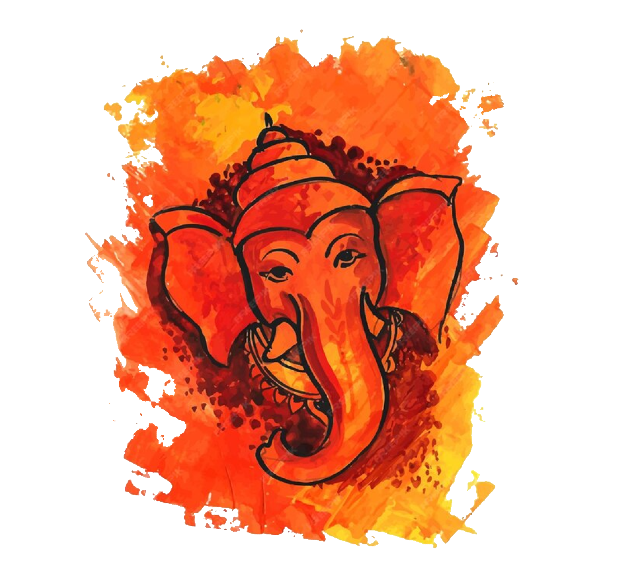
The Supreme Lord
Maha Ganapati
Discover the Majestic and All-Encompassing Aspect of Ganesha
Heading for Article :-
Maha Ganapati : The Powerful and Resplendent Form
Introduction :
Maha Ganapati, the thirteenth among the 32 divine forms of Lord Ganesha, is a majestic and powerful representation of the elephant-headed deity. In this form, Lord Ganesha is adorned with distinctive features that set him apart from his other forms. Maha Ganapati is revered for his three eyes and the crescent moon adorning his forehead, reminiscent of Lord Shiva. This form of Ganesha carries profound symbolism and significance, invoking devotion from countless devotees.
Iconography and Attributes :
Maha Ganapati is characterized by several unique features :
Complexion: The deity appears with a radiant red complexion, symbolizing vitality and strength.
Ten Arms: Maha Ganapati possesses ten arms, each carrying various auspicious and symbolic objects, signifying his multifaceted powers.
The ten hands of Maha Ganapati hold the following attributes :
Single Tusk: The prominent single tusk of Lord Ganesha, which is held in one hand, represents sacrifice and the ability to overcome obstacles.
Pomegranate: The pomegranate is a symbol of abundance, prosperity, and fertility.
Club: The club signifies strength and the power to vanquish obstacles and negativity.
Sugar-Cane Bow: The sugar-cane bow represents the ability to bend but not break, signifying flexibility and resilience.
Chakra (Discus): The chakra is a sacred wheel symbolizing the cosmic order and the power to overcome adversaries.
Conch: The conch represents the divine sound of creation and symbolizes auspiciousness.
Noose: The noose serves to bind and remove obstacles from the devotee’s life.
Nocturnal Lotus: The nocturnal lotus signifies purity and beauty emerging from the darkness.
Paddy Ear: The paddy ear is a symbol of nourishment and sustenance.
Jewels Pot (Ratnakumbha): The jewels pot represents treasures, both material and spiritual.
Consort and Nakshatra :
In this form, Maha Ganapati is seen with one of his consorts seated on his left thigh. This depiction highlights his role as a divine husband, protector, and provider. This form of Ganesha is associated with the Pushya Nakshatra, further accentuating his divine attributes.
Worship and Significance :
Maha Ganapati is considered one of the most potent and significant forms of Lord Ganesha. Devotees who seek his blessings believe that sincere worship of Maha Ganapati leads to success, prosperity, and praise in all their endeavors. His multifaceted symbolism, radiance, and powerful attributes make him a beloved deity among Ganesha’s many forms.
Dhyana Mantra :
Devotees recite the Dhyana Mantra for Maha Ganapati to invoke his blessings and grace:
“Hasteemdranana Minduchuda Marunachayam Trinetram Rasah
Dashilishtam Priyaya Sa Padmakaraya Svankashtayah Santatam
Beejapoora Gadekshu Karmuka Laschhakrabja Pashotapala
Vreehagra Svavishaana Ratna Kalasham Hastaih Vahantam Bhaje.”
This mantra underscores the attributes and blessings associated with Maha Ganapati and is chanted with devotion.
Conclusion :
One of the famous temples dedicated to Maha Ganapati is located in the Lord Krishna Temple in Dwaraka, Gujarat. Devotees visit this temple to seek blessings from both Lord Krishna and Lord Ganesha. Additionally, the temples in Chamarajanagar and Nanjangud in Mysore feature sculptures of all 32 forms of Lord Ganesha, including Maha Ganapati.
Editor – Kaalchakra Team
[ Note – Before Concluding anything as a Finale, Please Go through Original Scriptures of Vaidik Literature Written in Sanskrit and Also with Meaning of That time of Language. Because English is a Limited language to Explaining the Deeper Knowledge of Vaidik Kaal. ]
